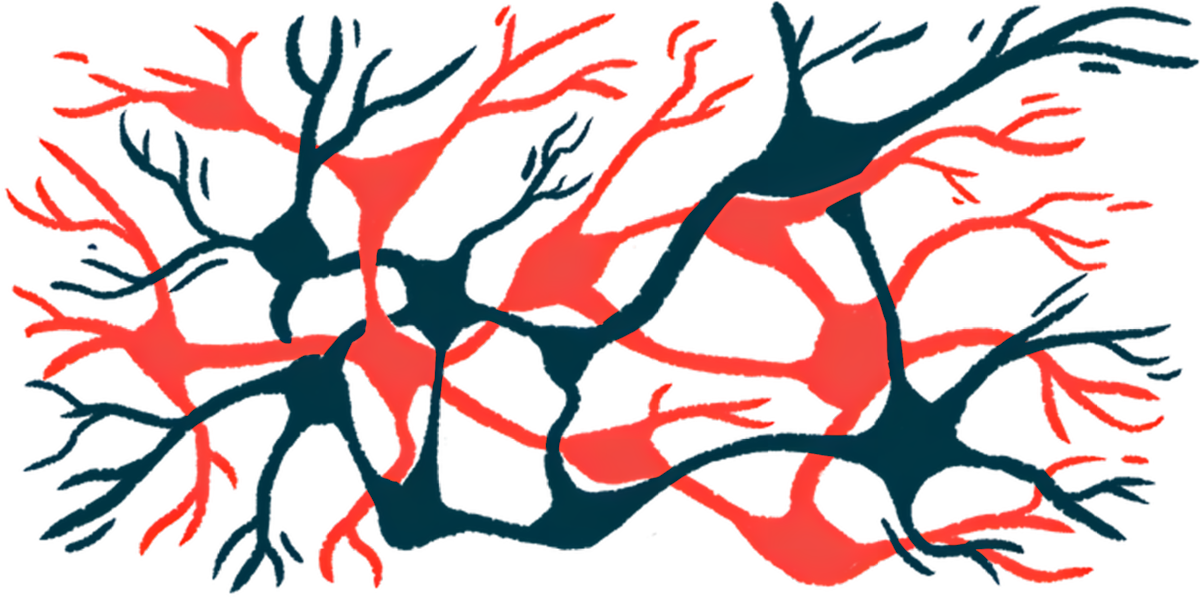IC 100 reduces inflammasome activation, alpha-synuclein clumps
Inflammasomes trigger release of pro-inflammatory molecules

Blocking the inflammatory protein ASC with IC 100, ZyVersa Therapeutics’ experimental therapy to reduce inflammation, prevented the activation of the inflammasome in microglia — the brain’s resident immune cells — and the start and perpetuation of an inflammatory response.
That’s according to results from a study announced by the company that also showed IC 100 was able to reduce alpha-synuclein aggregation, a hallmark of Parkinson’s disease that contributes to neurodegeneration. Inflammasomes are multi-protein complexes that trigger the release of pro-inflammatory molecules and are believed to be implicated in the chronic inflammation that drives Parkinson’s.
“These are the first data to link ASC speck assembly, NLRP1 inflammasome activation, and alpha-synuclein aggregation in neurons of Parkinson’s disease patients,” Stephen C. Glover, ZyVersa’s co-founder, chairman, president, and CEO, said in a company press release. “These results strengthen our belief in IC 100 as a potential disease-modifying therapy for Parkinson’s and we’re preparing to initiate proof-of-concept studies in animal models later this year.”
The study, “IC 100 blocks inflammasome activation induced by α-synuclein aggregates and ASC specks,” was published in npj Parkinson’s disease. The work was funded by The Michael J. Fox Foundation for Parkinson’s Research through a grant awarded to ZyVersa and leading inflammasome experts at the University of Miami Miller School of Medicine who conducted the study.
Parkinson’s is caused by the loss of dopaminergic neurons, the nerve cells that produce dopamine, a brain chemical involved in motor control. What triggers their loss is unclear, but the buildup of toxic protein aggregates made up of misfolded alpha-synuclein, called Lewy bodies, plays a role.
IC 100 is an experimental antibody-based therapy that targets the ASC protein, which participates in the activation of several types of inflammasomes. Inside cells, IC 100 binds to a region of ASC that participates in inflammasomes’ formation, thereby inhibiting their assembly and activation, and the perpetuation of the inflammatory response.
Testing IC 100 in Parkinson’s
ASC and inflammasome activation may help accelerate the toxic spread of alpha-synuclein, although “the underlying mechanisms of the neuroinflammatory response remain unclear,” wrote the researchers, who evaluated the levels of inflammasome proteins and activation in the brain of people who had Parkinson’s disease or Lewy body dementia, a related neurodegenerative condition.
They found that dopaminergic neurons exhibited an increase in the levels of inflammasome proteins, including ASC and NOD-like receptor protein (NLRP) 1, and an abnormal form of alpha-synuclein within Lewy bodies. These results suggest that inflammasomes, ASC activation, and aggregated proteins including alpha-synuclein, contribute to neurodegeneration in Parkinson’s disease. They also found that ASC and NLRP3 were present in microglia of people with Parkinson’s disease.
When mouse-derived immune cells were treated with ASC aggregates isolated from people with Parkinson’s or Lewy body dementia, the inflammasomes were activated. This effect was significantly decreased when cells were also treated with IC 100.
Also, administering preformed alpha-synuclein fibrils derived from the brain of people with Parkinson’s increased levels of the abnormal form of alpha-synuclein in microglia, an effect that was blocked by IC 100, possibly indicating improved protein clearance.
“Our findings demonstrate that targeting inflammasomes and ASC specks may be a promising approach not only for [Parkinson’s], but also for Lewy body dementia (LBD) and Alzheimer’s disease,” said Robert W. Keane, PhD, professor at the University of Miami and lead author of the study. “IC 100’s mechanism, which uniquely inhibits both ASC speck activity and misfolded protein aggregates, makes it a strong candidate for treating neurodegenerative diseases.”







